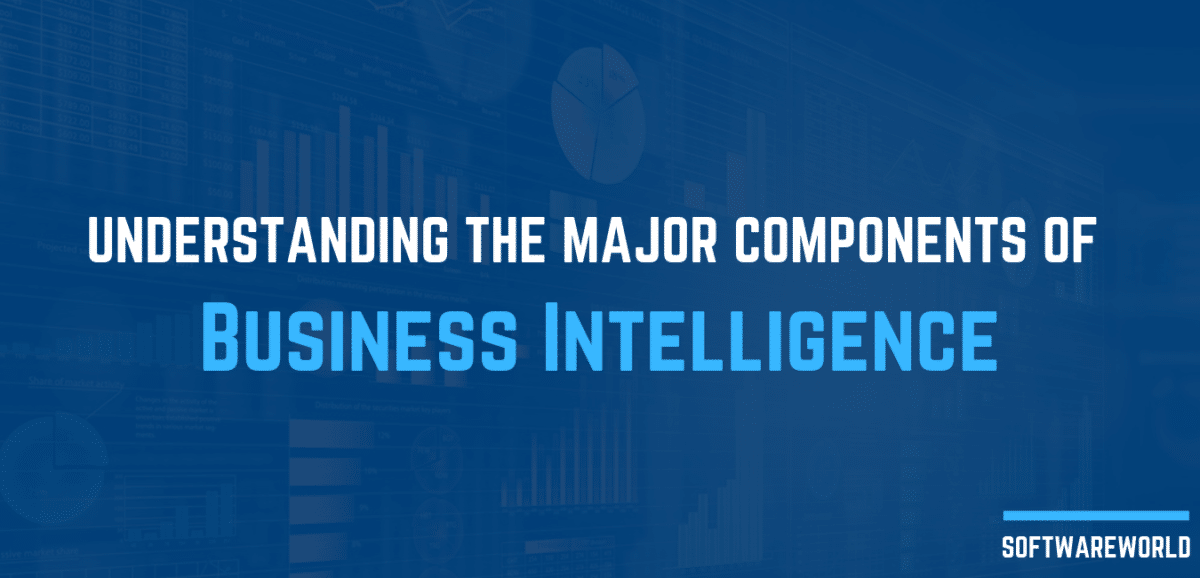Without business analytics, you can’t stay ahead of the competition. Without business intelligence, your business analytics don’t exist.
Business intelligence uses all the available tools, technologies, and practices to collect, present, and analyze business-related information. All of the above has a simple goal: to help business owners make the right decisions.
Business intelligence tools collect information about the company itself and the environment around it. All the data is processed to take a simple enough form to assist with decision-making.
Companies all over the world are coming to the understanding that business intelligence is an integral part of their success. Before the majority of your competitors learn how to take full advantage of it, you have a nice leeway.
Get closer to success with business intelligence by taking a closer look at its major components. In this article, you can do just that and a bit more to help your business shine.
1. Online Analytical Processing (OLAP)
This technology stands behind the majority of business intelligence applications. It deals with data discovery as well as capabilities for report viewing, complex calculations for analytics, and assistance with “what if” scenario planning.
OLAP analyzes business information in a multi-dimensional manner to assist with complex calculations, trend analysis, and data modeling. With OLAP, the end-user gets an opportunity to analyze specific data in multiple dimensions to obtain the necessary insight for making a decision.
Businesses are constantly bringing information together to perform different analysis. They have a sharp need to get all the data in one place to achieve an accurate and reliable understanding of different aspects of the data. OLAP can help them achieve just that: get quick access to multi-dimensional analysis results.
What makes OLAP software different from other analytics tools is the ability to store information in a multidimensional database structure. Dimensions to use are locations, periods, employees, products, accounts, etc.
2. Corporate Performance Management
Corporate Performance Management (CPM) encompasses methods, metrics, activities, and systems, which are used to monitor and manage the business performance of a company. CPM software processes the focused information to turn it into operational plans.
This process and methodology offer business owners an integrated approach to planning, forecasting for finance, sales, marketing, HR, and operations. When this methodology is implemented, it joins company strategies with plans and executions, thus helping a business succeed and improve.
CPM is an important component of business intelligence for companies that are looking for such changes as budget remodeling, cost-cutting, upgrading organization strategy, better KPIs alignment, and improving the process of financial planning.
According to software experts at Tricension, cloud-based CPM software makes it easier to deploy the process, reduce costs, and up the information speed and flexibility. It allows the company to automate numerous manual tasks, and improve the alignment between finance and operations.
3. Real-Time Business Intelligence
Real-time business intelligence (RTBI) is used when sorting, and analyzing business data and operations have to be done at the collection stage. Real-time BI allows the company to get insights into the business process as quickly as possible to take strategic action.
This BI component is demanded when live business insight is required, which is not a rarity in the fast-paced environment of some industries.
RTBI is becoming especially popular in fast-paced modern society. Using software designed for RTBI, a company can create quick responses to real-time trends over email, apps, messengers, etc.
For example, RTBI can help create special offers at the most suitable time possible to get the highest conversion rate. Another example is limited-time specials for restaurants or supermarkets that have to do with perishable products and high demands at certain times of the day.
All of the above can be done while the client is on the website and near one of the company’s physical locations.
4. Data Warehousing
Data warehousing allows the business owner to go through different data subsets and examine components that could help make the right business decisions. For example, warehousing gives a user an opportunity to monitor certain sales information collected on Mondays for the past 50 weeks.
It helps create important statistics about the business and the industry. Warehousing implies storing formidable amounts of data in numerous special ways, which could be useful for analysis.
Different technologies exist to help the user take advantage of data warehousing quickly and effectively.
Technically, the data warehouse regularly receives data from apps and systems used by the company. The data is formatted and imported to match the data already stored in the warehouse. The processed data becomes readily available to the end-users to help them make business decisions.
The organization chooses how often the data should be obtained from apps and systems depending on its particular needs and requirements.
It’s worth noting that a data warehouse is different from a simple database. Data warehouses are created to help perform an analysis of a large volume of data. Their goal is to receive and process information in the shortest period of time possible.
5. Data Sources
For the business intelligence process and methodology to be integrated, it is important to have the right understanding of the data sources. Pulling raw data from different sources, internal and external is vital to the diverse analysis options.
Companies tend to store huge amounts of operational data. BI needs to navigate between the data sources. In most companies, mainframe legacy systems create a foundation for the data centers because they can deal with large volumes of data. However, such data is usually difficult to procure since many legacy apps are often obsolete or proprietary. Operational data sources to take advantage of are:
› Enterprise Resource Planning – stores a large amount of transaction data, which can be used in BI environments.
› CRM (Customer Relationship Management) – an excellent source of data for BI since these systems store and analyze customer behavior and important data, such as purchase activity.
› E-Commerce Apps – these apps can be a great source of data for BI since they offer real-time sales activity.
Other sources are numerous company databases, flat files, web services (apps), RSS feeds, and more.
Common Benefits of Business Intelligence
BI offers a variety of benefits to companies that choose to utilize it. It can put a stop to a big amount of guesswork that often accompanies decision-making, improves communication within departments and between them, and coordinates activities. BI helps companies quickly respond to changes in the financial sector, industry, customer preferences, and supply chain functions.
BI tends to improve the overall performance of the company by taking advantage of the second most important resource – the data (the first one is people). When a business owner gets an opportunity to make decisions based on timely and precise information, the company wins.
› BI allows employees to process their knowledge using analytical intelligence to deal with different business issues, such as slow and inefficient marketing campaigns.
› BI helps with finding the most profitable customers and figuring out why they keep loyalty to the company. This information is vital for further conversions.
› It helps with click-stream data analysis to improve e-commerce approaches.
› It allows discovering money-laundering and other fraudulent activities within the company.
› BI analyzes the potential customer profitability growth and reduces risks by acquiring accurate financial credit scoring of the existing clients.
› It figures out what type of products which customers are likely to purchase and when.
› BI reduces equipment downtime by implementing predictive maintenance.
Business Intelligence offers solutions such as the following:
› Speed
BI tools can provide the requested data in the shortest amount of time, often in real-time. The value of business-related information often depends entirely on speed.
› Reliability
The quality of information collected with BI tools is reliable but only when the right components are used. Important information can be obtained in small fragments, analyzed, and evaluated to provide value.
› Combination
The ability to find answers to complex questions based on processing smaller pieces of information. The system can offer a high degree of abstraction if necessary to build a solid model data.
› Navigation
The ability to find the right information at the right time and the right place. BI allows navigating through data to identify the necessary pieces for analysis.
› Presentation
The better the BI system performs, the fewer effort is required from the user to interpret the information to assist with decision-making. The speed of the BI results depends on the presentation accuracy.
Final Thoughts
Knowing how to work with BI tools can improve the growth and development efforts of any organization trifold. To start, it’s important to realize how to build the BI intelligence process, using the above components.
Next, the company has to choose the right BI software to implement the strategy and achieve the desired results.
Finally, it’s important to analyze the overall effect the BI strategy has on the organization’s ability to grow and develop.
YOU MAY ALSO LIKE
› Top 30+ Data Visualization Software
› Top 10 Best Business Dashboard Software
› Top 10+ Data Analysis Software
› Top 10 Business Performance Management Software


